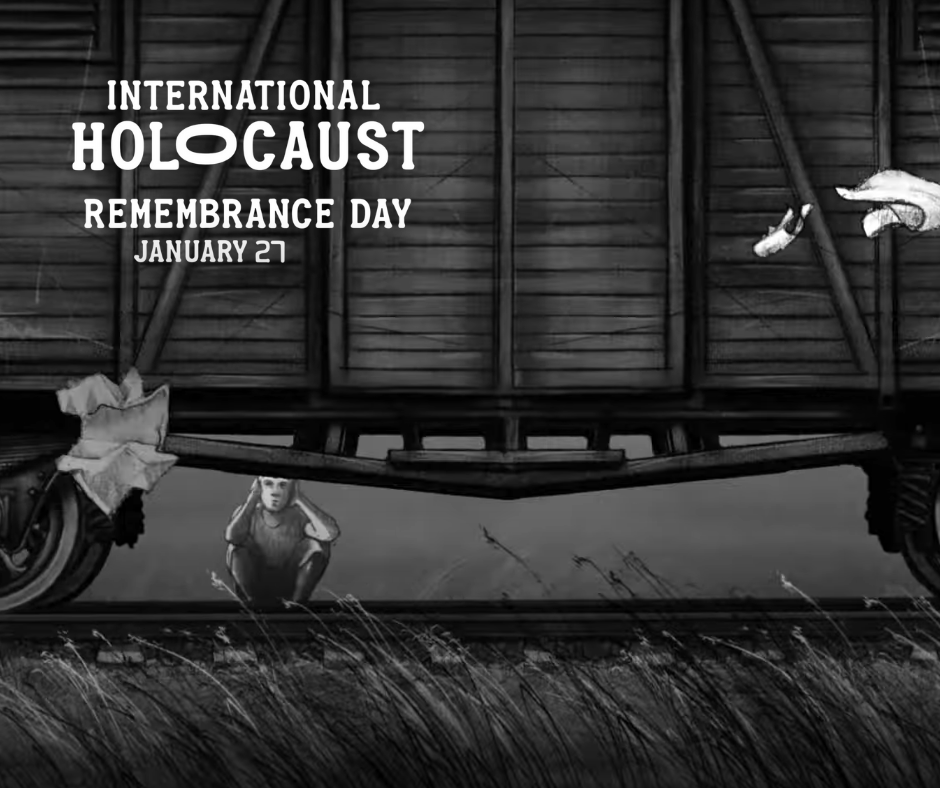27 January is designated by the United Nations General Assembly as International Holocaust Remembrance Day. Since 2005, the UN and its member states have held commemoration ceremonies to mark the anniversary of the liberation of Auschwitz-Birkenau and pay tribute to the Jewish victims of the Holocaust and millions of other victims of Nazism. For this occasion, the European Network Remembrance and Solidarity each year comes up with initiatives to broaden awareness of the Holocaust.
“The Holocaust, which manifested itself and took place in Auschwitz and numerous other sites of annihilation, represents a rock bottom point in history. It has come to symbolize the lowest depths of what mankind is capable of doing to one another, the absolute epitome of political and human evil, from which there can only be one consequence, “Never again” (prof. Matthias Weber).
Auschwitz-Birkenau was the biggest Nazi Concentration Camp and extermination center. Between 1940 and 1945 about one million Jews and 100,000 members of other ethnicities, including Poles, Roma as well as Soviet captives, were killed. The methodical extermination at Auschwitz lasted until the very end of the camp's operation. On January 18, only a few days before the Red Army crossed the Camp’s gates, the evacuation began: nearly 60,000 prisoners were forced to go on the death march and about 15,000 died.
Auschwitz is a symbol of the Holocaust, but this unprecedented crime against humanity took place wherever the influence of the Third Reich reached. As a result of the Shoah, nearly 6 million Jews lost their lives, of which about half are victims of different concentration and extermination camps.
In the spirit of responsibility for the present day and concern for the future, the European Network Remembrance and Solidarity each year takes part in the commemoration of the International Holocaust Remembrance Day.
This year’s commemoration initiatives, among other, will include social and e-media activities, which will be conducted from 17 to 31 January, in order to broaden awareness of the Holocaust.
How can you join the International Holocaust Remembrance Day campaign?
▪️ With a moment of silence and reflection, try to answer the question: "Why did Auschwitz not fall from the sky?”▪️ Watch a short animated film, “Memento” , prepared by the ENRS and the House of the Wannsee Conference for the International Holocaust Remembrance Day; the film is directed by the Hungarian auteur Zoltán Szilágyi Varga.
▪️ Watch a short film, “Righteous Diplomacy” (2021) dedicated to diplomats who played an important role in saving thousands of Jews during the Second World War. The film is part of educational package “Diplomats Aiding Jews” on Hi-story Lessons , an online educational platform.
▪️ Study our special educational package on the subject. The lesson plans and ideas for commemorating Holocaust-related remembrance days developed by educators refer, among other, to travelling exhibition “Between Life and Death […]” focusing on various forms of aiding Jews during the Holocaust and stories of their survival. The materials are available in Polish and English at Hi-story Lessons .
▪️ Find out more about the travelling exhibition “Between Life and Death. Stories of Rescue during the Holocaust” which tells the hidden stories of the selfless courage and incredible efforts made to save the lives of Jews, during the Second World War.
▪️ Listen to an interview with one of the heroes of the exhibition “Between Life and Death […]” – Elżbieta Ficowska, and read about her love to both of her mothers in the article “In the name of her both mothers”.
▪️ Read the Carol Elias’s piece on the “Holocaust and Diaspora Survival: The Next Generations. Past, Present, Future” and Roman Żuchowicz’s article introducing the subject of “The Wannsee Conference”, a meeting of senior government officials of Nazi Germany and Schutzstaffel (SS) leaders to discuss the implementation of the “final solution to the Jewish question”.
▪️ Visit an interactive map of the Wannsee Conference.
▪️ See how the participants of the “Sound in the Silence” transformed the knowledge about the Wannsee Conference they gathered during the educational activities into a moving performance at the Wannsee villa and the surrounding park, recalling the voices of both perpetrators and victims, and thematising the harrowing contrast between the peaceful scenery and the mass murder that was organised here. Read some reflections about this year’s edition of the project.
▪️ Explore Holocaust issues from an academic perspective with video recordings and other materials from the conference „Genealogies of Memory 2020. The Holocaust between Global and Local Perspectives” (2020), and
▪️ An issue of “Remembrance And Solidarity. Studies in the 20th Century” on the subject of the Holocaust/Shoah (2016).
▪️ Once more listen to the Marian Turski’s, Auschwitz survivor’s, speech delivered at the commemoration of the 75th anniversary of the camp’s liberation and share your feelings.
▪️ Follow us, commemorate with others and do not be indifferent.
Find out more about the ENRS’s commemoration of the International Holocaust Remembrance Day here.
